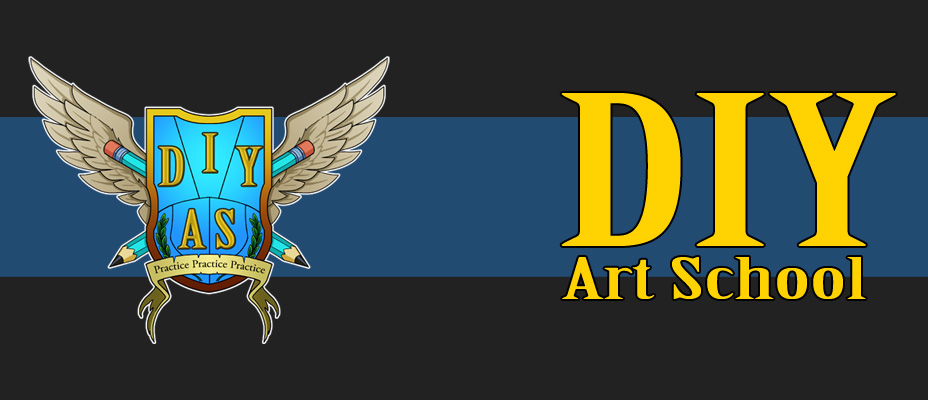First, what do we mean by “relative”? Relative in this context means that how we perceive one thing, is dependant on other things around it or related to it. In art, everything in the image you create are viewed against the other elements in the image, and shape how we perceive them. Let’s look at some of the various ways we can use this relative perception.
Relative size
I think one of the easiest ways to illustrate that everything is relative is to consider size. I want you to imagine the biggest spider you’ve ever seen. I remember once finding an orb spider that had made a web over my porch. He was at least 2 inches long. Relative to almost any other spider I had personally seen, this spider was HUGE. However, if a hungry raven had flown down with the intent to eat that spider, well that tiny spider wouldn’t have stood a chance. The spider is only “huge” relative to other spiders I’ve seen. Relative to a raven, it’s tiny.
Relative color and value
Relative color is where things start getting interesting. We all understand the concept of warm colors (yellow, orange, red) versus cool colors (blue, green, purple). They are warm or cool relative to the other colors on the color wheel. However, we can take the colors individually and talk about a warm yellow (for example cadmium yellow) versus a cool yellow (like lemon yellow). How we think about color is relative to the other colors in consideration. This is especially true in your art, and realizing this helps you to look at color more objectively, and to make more interesting color choices.
 |
| Credit Edward H. Adelson, Professor of Vision Science at MIT |
Consider the above image. If I ask you which color, A or B, is lighter you'd most likely answer B. In fact the answer might be so obviously true that you'd immediately suspect, correctly, that there is a trick.
 |
| Credit Edward H. Adelson, Professor of Vision Science at MIT |
With a little help, we can see they are actually the same exact color. There are two factors at play making this work. Part of it is the perceptual illusion based on our expectations developed from a life time of seeing shadows. The other part is the relative color based on those near the colors in question. In one, the color is surrounded by darker colors, making it appear light in comparison, in the other the opposite is true.
 |
| whether the grey square seems light or dark depends on what color surrounds it. |
French artist Eugene Delacroix said, "I can paint you the skin of Venus with mud, provided you let me surround it as I will." He understood that how we perceive a color is based entirely on what is around it.
Knowing this, you can more easily understand that to make something appear blue, does not always require that you use blue right out of the tube. In fact, sometimes you don't use blue at all. Grey, brown, purple, or green can all pass for blue in the right circumstances. To make something appear black, you will most often avoid actual black, but it will appear black relative to the other colors around it.
As you learn to paint, you will often find yourself mixing what you think will be the perfect color, only to find that when you dab it onto the canvas that it appears entirely different when surrounded by the other colors. You have to constantly be ready to reexamine and question the color and value choices you have made.
As you learn to paint, you will often find yourself mixing what you think will be the perfect color, only to find that when you dab it onto the canvas that it appears entirely different when surrounded by the other colors. You have to constantly be ready to reexamine and question the color and value choices you have made.
Contrast
You can also use the concept to enhance other qualities. You can help make a human being seem strong and resilient, or soft and vulnerable by changing what surrounds them.
Imagine a World War 2 fighter plane, flying out to take on an alien invasion. It's going to appear to be primitive technology. Now imagine it flying over a battlefield filled with Roman soldiers with swords and horses. Now that same plane is practically magic!
There are endless ways in which the phrase "everything is relative" can be applied. You have to remember to establish the base line in such a way that it sets the stage for the qualities you want to highlight.








